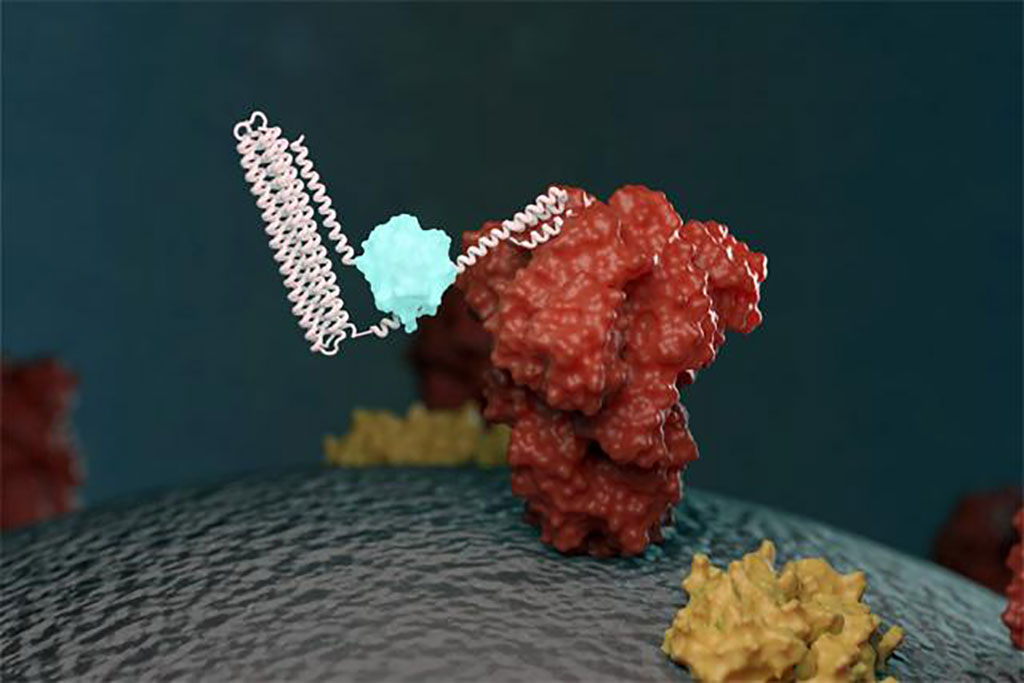Protein-Based Biosensors That Glow When Mixed With SARS-CoV-2 Components or Antibodies Could Enable Faster COVID-19 Testing
By LabMedica International staff writers
Posted on 01 Feb 2021
Scientists have created a new way to detect the proteins that make up the SARS-CoV-2 virus, as well as antibodies against it by designing protein-based biosensors that glow when mixed with components of the virus or specific COVID-19 antibodies. Posted on 01 Feb 2021
The breakthrough achieved by scientists at UW Medicine (Seattle, WA, USA) could enable faster and more widespread testing in the near future. To diagnose SARS-CoV-2 infection, most medical laboratories currently rely on a technique called RT-PCR, which amplifies genetic material from the virus so that it can be seen. This technique requires specialized staff and equipment. It also consumes lab supplies that are now in high demand all over the world.

Image: Illustration of a biosensor detecting a targeted molecule and glowing (Photo courtesy of Ian Haydon)
In an effort to directly detect coronavirus in patient samples without the need for genetic amplification, a team of UW researchers used computers to design new biosensors. These protein-based devices recognize specific molecules on the surface of the virus, bind to them and then emit light through a biochemical reaction. The same team of UW researchers also created biosensors that glow when mixed with COVID-19 antibodies. They showed that these sensors do not react to other antibodies that might also be in the blood, including those that target other viruses. This sensitivity is important for avoiding false-positive test results.
“We have shown in the lab that these new sensors can readily detect virus proteins or antibodies in simulated nasal fluid or donated serum, said David Baker, professor of biochemistry and director of the Institute for Protein Design at UW Medicine, who led the study. “Our next goal is to ensure they can be used reliably in a diagnostic setting. This work illustrates the power of de novo protein design to create molecular devices from scratch with new and useful functions.”
Related Links:
UW Medicine













